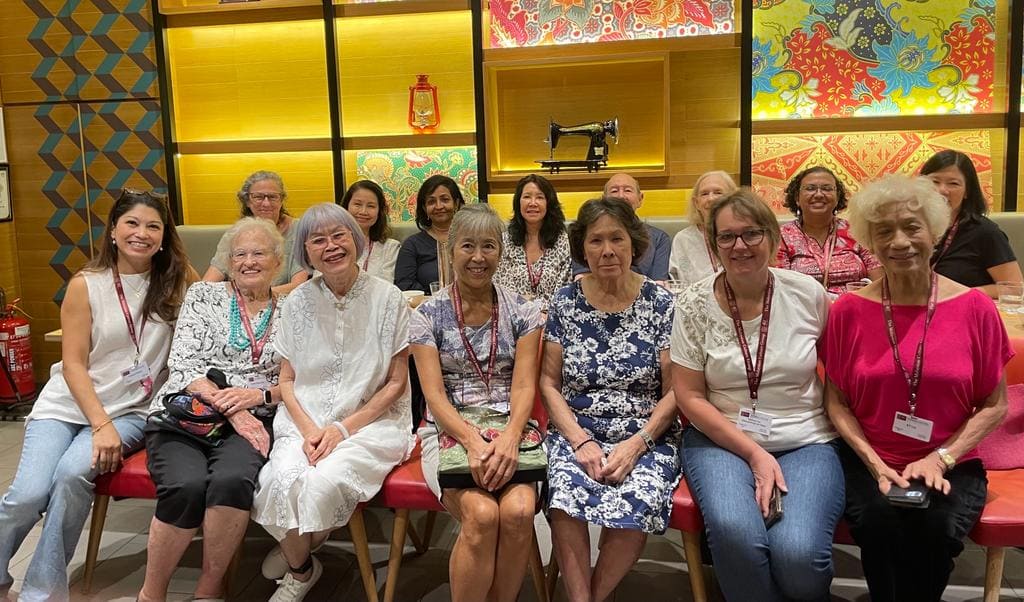Sepiring Review 22/2/2024

The Sepiring Restaurant lunch was much awaited and thoroughly enjoyed by the 18 members who gathered at Paradigm Mall on the 22nd of February. Founded in 2014, this restaurant is a popular site with locals as it is dedicated to Nusantara (Malay archipelago) cuisine, ensuring a fusion of tastes from local Peranakan Malay cuisine.
Members and guests took this opportunity to experience the ambience and good food as well as meet friends, old and new. The authentic Malay music lent an added touch to the mood.
The event was officially opened by Co-Convenor, Corrine Sibert, who welcomed and thanked members and guests for their attendance. At sharp noon, lunch was served. A pleasant surprise awaited the members.
Before the meal the host Jayanthi gave a speech about Peranakan/Baba Nyonya, and how Malay Peranakan food came about. She ended with descriptions of the 4 types of food that were served.
This restaurant is noted for its sharing platters where 2 or 3 people share a meal on a large platter. The platters have vegetables, rice, chicken and other condiments including sambal belacan (prawn paste). Enak! members and guests had Penang Rojak as a starter, then the Nyonya Nasi Ulam platter with Ayam Percik, and for dessert Pulut Hitam (black rice pudding with coconut milk) and Bubur Cha Cha (various beets cooked with coconut milk).
Nasi Ulam Nyonya : Herbal Rice is a steamed rice, cooked with more than 10 types of Malaysian herbs, dried shrimps, and fried onions. It is served with local dishes such as sambal udang, stir fried vegetables, and other dishes.
Penang Rojak is made from a variety of fruits and vegetables topped with a creation of prawn paste sauce. As its ingredients suggest, the sauce is a combination of sweet, spicy, salty and sour. Which creates a combo of sweet, sour and crunchy.
The pulut hitam dessert is made of black glutinous rice and coconut milk, sweetened with palm sugar or rock sugar. Besides being very rich and creamy in flavour, it is also high in antioxidants and fiber.
Bubur cha cha’s ingredients are cooked in coconut milk, and the dish can be served hot or cold. The colorful starchy chunks are made of tapioca. Also added are sago, sweet potatoes, pandan leaves, sugar and salt. Grated coconut, coconut cream and water can be used as additional ingredients.
Beautiful memories of this event were provided by photographs from Corinne Silbert and Jayanthi. Although the participants gathered for this occasion were from a variety of countries and nationalities, they discovered that the tangy, aromatic, spicy and herbal heritage cuisine can be a force that makes people connect and communicate.
Review by Jayanthi Sinnathamby
